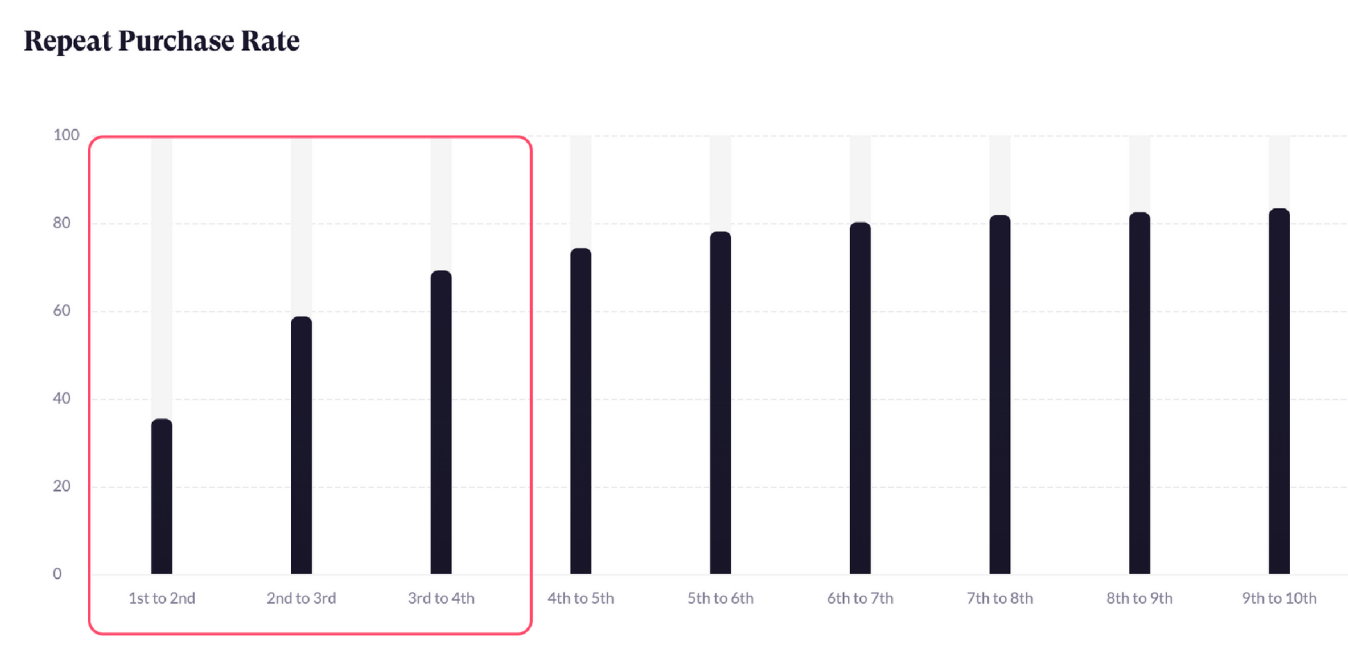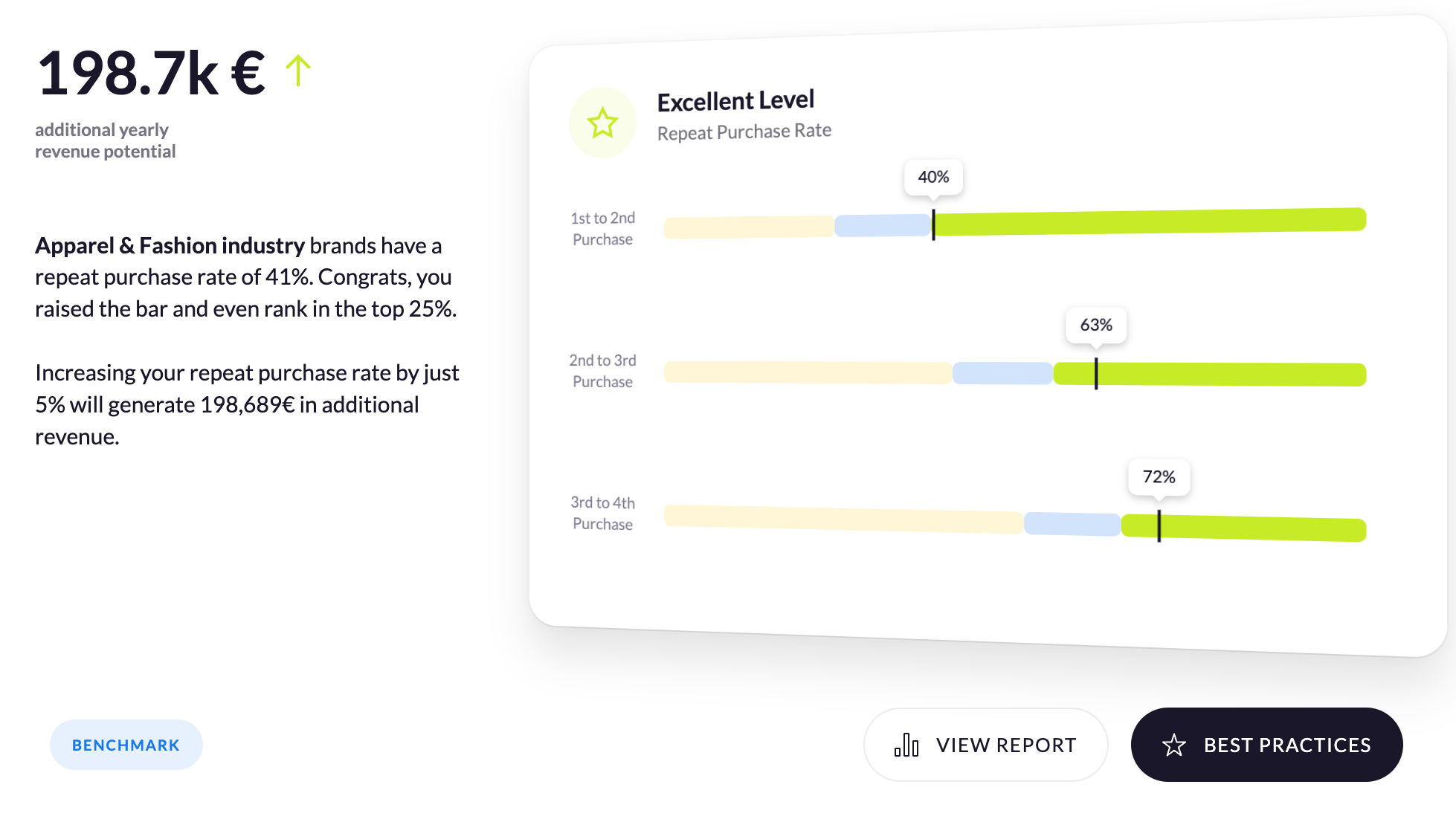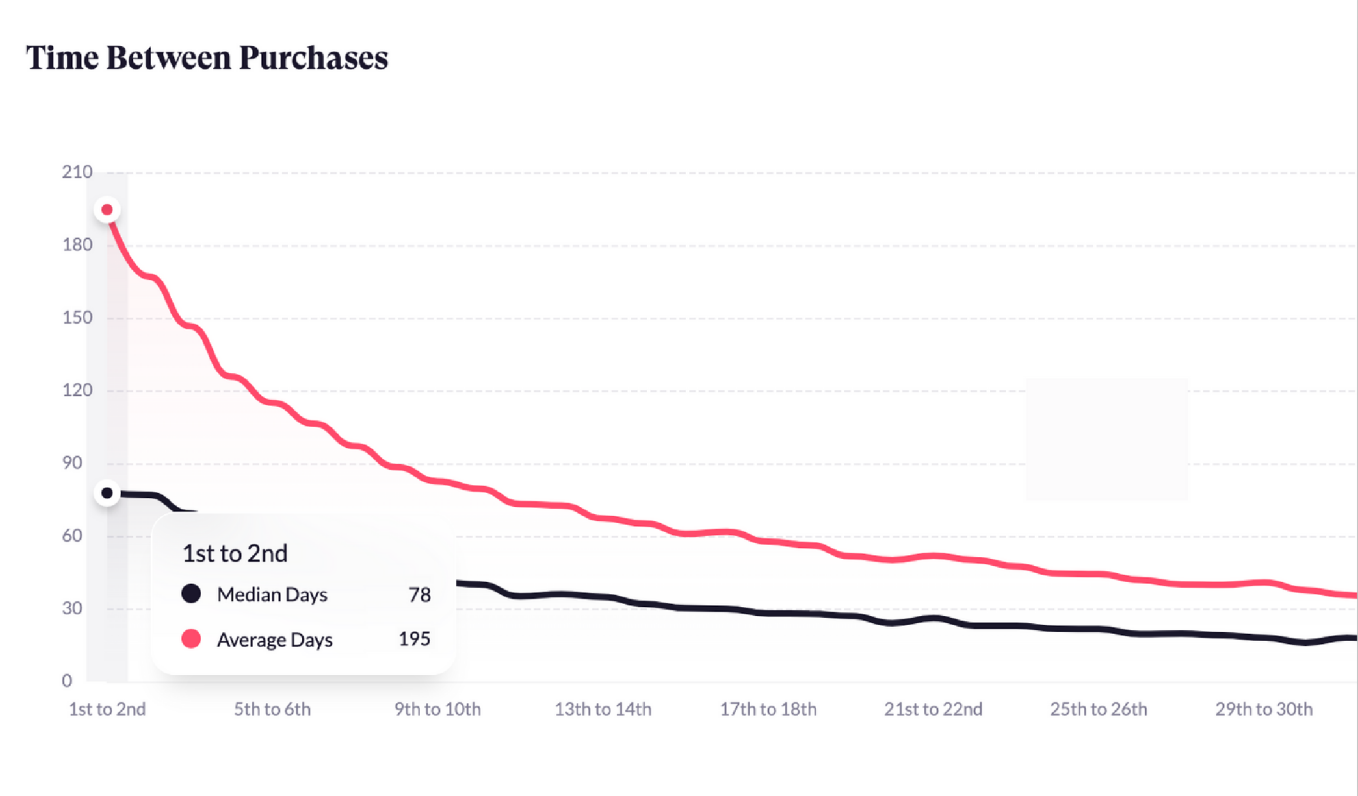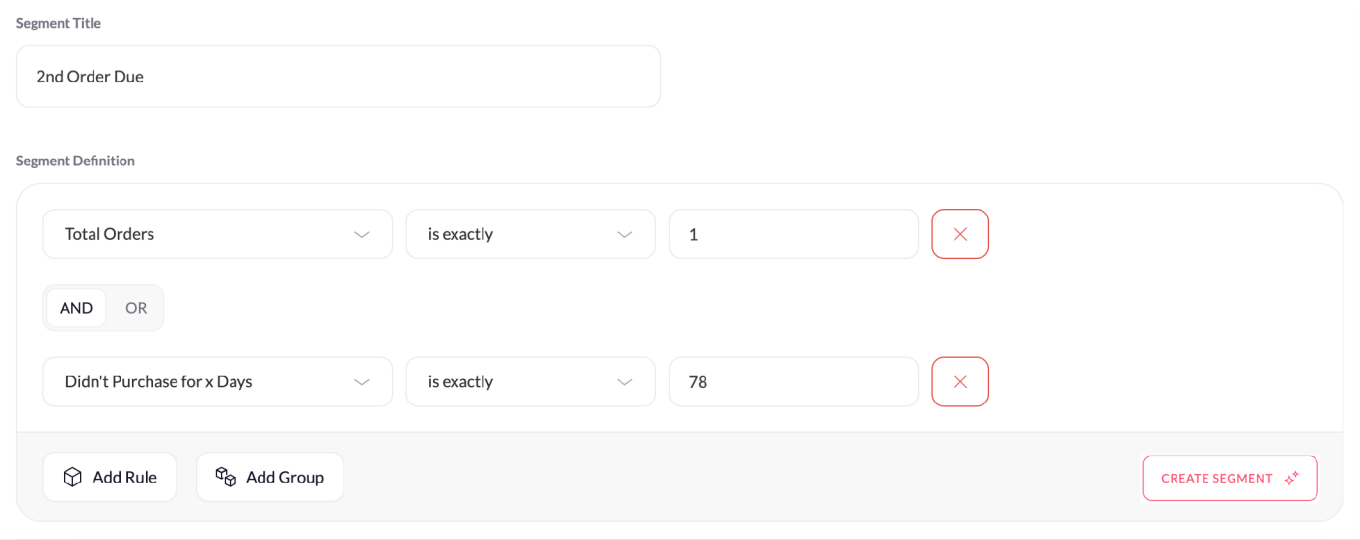Shopify Repeat Purchase Rate: A Comprehensive Guide
Your best customers are the ones you already have! After a customer has placed an order, it is your job to inspire them to place another order. Therefore, it is important to time your retargeting campaigns to increase the chances of catching your customer's attention. RetentionX can help you do this:
-
 RetentionXMaximize Your Lifetime Value (LTV) with Analytics & Automation4.9
RetentionXMaximize Your Lifetime Value (LTV) with Analytics & Automation4.9 30-day free trial
30-day free trial Free plan available
Free plan available Built for Shopify Plus
Built for Shopify Plus
Typically, the biggest challenge is converting one-time buyers into repeat customers. Building customer loyalty is crucial in this process as it not only converts one-time buyers into repeat customers but also fosters brand advocacy and a steady revenue stream. Benchmarks show that the likelihood of a repeat purchase increases with each subsequent purchase - in fact, a second purchase results in an average of three additional orders over the lifetime of the customer. So let’s understand at what order number your customers become loyal and make it a habit to buy from your brand again and again, recognizing that repeat purchases are a key factor in fostering this loyalty. Your goal should be to get your customers to that level of loyalty.

Check your customer data with the Repeat Purchase Rate Analysis. For each order, this analysis shows the percentage of customers who placed a repeat order. This report answers important questions like How many of your first-time buyers returned for a second purchase? How many of them made a third purchase?
Identify the order number at which the repeat purchase rate stabilizes at a high level. Now it is up to you to incentivize your customers to reach at least this order number.

Shopify also has a repurchase rate analysis, but you can't really use it. This is because of the following.
-
Shopify calculates the repurchase rate as the ratio of existing customers to total customers, but not how many of your customers come back at all.
-
Shopify also doesn't differentiate where you're losing customers and doesn't offer a return rate by number of orders. There are huge differences. Typically, the second order is very critical.
-
As a result, Shopify often gives a highly embellished picture of the actual state. We have seen many brands that claim to have a 60% repurchase rate, but have not been able to get 80% of their customers to place a second order.
– therefore Shopify does not provide a reliable Repeat Purchase Rate metric out of the box
With the latest release of RetentionX, your Shopify data is constantly monitored and benchmarked against your industry. Understanding customer lifetime value is crucial in this context, as it helps in measuring the direct impact on your revenue when you reach the industry standard, by focusing on customer retention, repeat purchase rate, and average order value. This approach emphasizes the importance of maximizing repeat customer rates to unlock customer lifetime value and sustain revenue growth in ecommerce.

Now that we know which order is critical to building loyalty, when is it overdue? Time Between Purchases analysis helps you understand the regular buying patterns of your customers. The median number of days between purchases indicates when a customer’s next order is overdue. Only after this time has elapsed should customers receive additional inspiration or incentives.

For example, if the median days between the 1st and 2nd orders is 78 days, all customers who placed their first and only order more than 78 days ago are past due.
To put these insights into action, we need to identify the customers we want to work with based on customer segments. For this, segment all overdue customers who haven’t yet placed the number of orders required to achieve loyalty. E.g., all overdue customers who have shopped either once, twice, or three times. Taking one-time buyers as an example, the segment conditions are as follows:

Analyzing customer feedback is crucial in refining the segmentation of overdue customers, as it allows us to understand their needs and preferences better, ultimately improving customer satisfaction and the rate of returning customers.
But that is not all. RetentionX automates this process by determining whether each customer’s next order is overdue based on their progress through the customer journey. This means that loyal existing customers become past due faster than new customers. This dynamic information can easily be used as a segmentation criteria:

Understanding the importance of customer retention and how exceptional customer service can turn new customers into loyal customers is crucial for ecommerce success. To engage with these customers, start by connecting your favorite email marketing platform, such as Klaviyo, to RetentionX. Considering the rising costs of customer acquisition, it's more financially beneficial to focus on your existing customer base to improve the repeat customer rate. Be sure to select segments to add to your contact profiles, including those of returning customers, emphasizing their significance in sustaining a healthy repeat purchase rate. This will put your insights where your marketing team needs them. Unlike traditional subscriber lists, segments are dynamic, meaning they grow when customers meet the segment conditions and shrink when they no longer meet the conditions. Use your customer segment information to create audiences that target your delinquent customers and reach them at the right time.
To engage with these customers, start by connecting your favorite email marketing platform, such as Klaviyo, to RetentionX. Be sure to select segments to add to your contact profiles. This will put your insights where your marketing team needs them. Unlike traditional subscriber lists, segments are dynamic, meaning they grow when customers meet the segment conditions and shrink when they no longer meet the conditions. Use your customer segment information to create audiences that target your delinquent customers and reach them at the right time.

With RetentionX, the same customer segment can be used simultaneously across all your channels.


 30-day free trial
30-day free trial